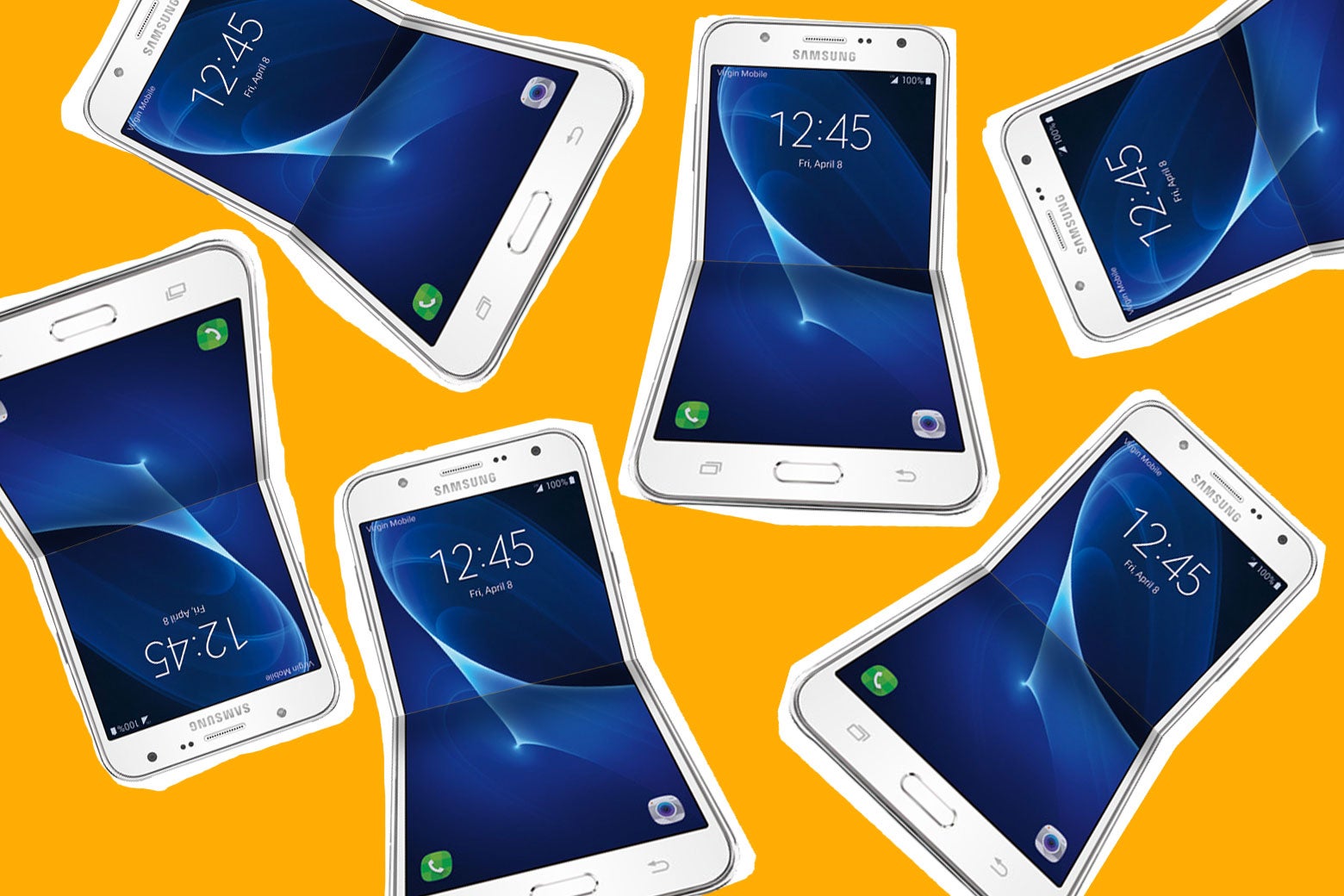Today’s slablike, big-screened smartphones are useful, but there’s something to be said for the flip-phone designs of the past. The hinged style made the device more compact, better for stashing in a purse or pocket. With the screen folded inward against its keyboard, chances of scratching the device’s display were minimal. While the days of the mechanical keyboard and number pad seem to be over, at least in flagship phone models, the idea of a folding phone has been resuscitated. Samsung is working on a folding-screen smartphone set to debut next year, according to a report from the Wall Street Journal.
Code-named “Winner,” Samsung’s prototype device combines the portability of a smartphone with the screen size of a tablet. It features a 7-inch diagonal display and folds in half, much like a wallet. When folded, it has a small display bar on one outer side of the device and camera lenses exposed on the other half. For Samsung, the device would mark a third flagship product category for the company, joining its Galaxy S and Galaxy Note lines, but its initial launch would be limited. Samsung will likely target a specific market—like high-end gamers—since the device’s price tag, expected to be about $1,500, might be hard for general users to swallow. (However, it’s worth noting the $1,000 iPhone X ended up selling better than expected; as long as the device has solid performance and compelling use cases, consumers may forgive the price.)
Samsung’s reported foldable smartphone is the latest case of electronics manufacturers having folding-display ambitions. Last year, Chinese phone maker ZTE came out with the Axon M, a smartphone with two 5.2-inch, 1080p displays that open up to form a larger 6.75-inch diagonal screen. The innovation didn’t quite work out practically. TechCrunch called it a “fascinating mess.” Companies such as LG have also toyed with bendable and foldable displays over the years. The company first demoed folding-screen prototypes in 2016. At CES 2018, it showed off a 65-inch OLED TV capable of rolling up like a poster. Years before either of these products became reality, Microsoft had started working on a dual-screen, productivity-focused tablet called the Courier. Microsoft shelved the 2010-era idea as it eventually switched its efforts to the Surface, but the dream never died: Microsoft eventually wants to develop a pocket-friendly, dual-screen Surface device that would blur the distinction between mobile and desktop.
Samsung’s device, however, would reportedly differ from these earlier products and prototypes in one important way: Rather than featuring two separate displays that fold into one another, it has one single display capable of folding in half. It could be beating Apple on this innovation—in 2017, reports suggested that Apple had begun work on a folding-screen smartphone for 2020. The bezelless device would use a display from LG, and following in the iPhone X’s example, would have no home button. The U.S. Patent and Trademark Office granted Apple a patent (originally filed in 2016) for a foldable display on July 10. Microsoft, internal emails reveal, has also been working on its dual-screen project for the past two years.
Of course, there’s a chance these products never come to market: Companies file for intellectual-property protection on nearly any idea that seems vaguely marketable. And as we saw with the Courier, logistics, changes in company strategy, and other factors can derail a project. Still, the technology seems to be at a point where it’s finally viable, and consumers are getting complacent with the current smartphone and tablet landscape—the timing is right for something different.
For those who appreciate the larger screen size of a tablet but don’t find one practical to carry around on a regular basis, a foldable phone could be a perfect solution. For productivity—typing out memos, working with two apps on a split screen, or manipulating spreadsheets or data sets—a larger display is preferable. By folding in half, it becomes something you can also easily pocket. Samsung’s rendition looks like it will arrive first, but if reports and leaks prove accurate, Apple and Microsoft could follow with versions of their own. After more than a decade of sketches, prototypes, and predecessors, 2019 could finally be the year the folding screen smartphone arrives.
